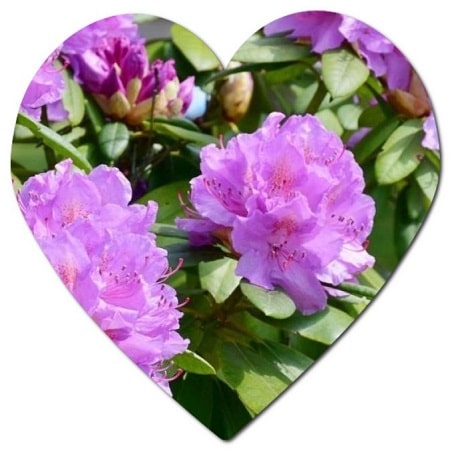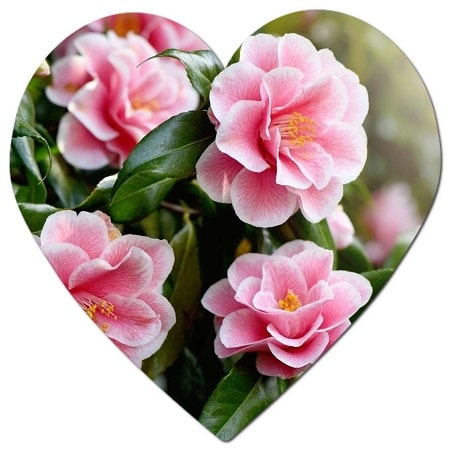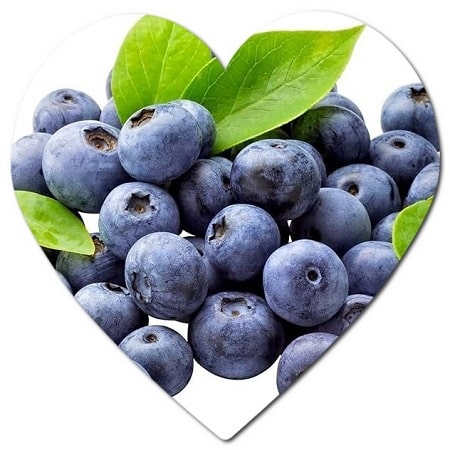Alabama’s climate varies from the humid subtropical climate in the southern part of the state to a more temperate climate in the northern areas. This diversity in climate and soil conditions allows for a wide range of plants to thrive in Alabama. In Alabama, land can be homesteaded for agricultural purposes. The term “homestead” typically refers to a piece of land that is owned and used as a family’s primary residence, which can include agricultural land where farming or ranching activities are conducted. Homestead exemptions and agricultural use classifications may be available to property owners, offering tax benefits or reduced property taxes for land used for agricultural purposes.
Specific regulations and eligibility criteria for agricultural homesteading can vary by county, so property owners should consult with their local tax assessor’s office or agricultural extension service for detailed information and requirements.Here are some plants that can grow well in Alabama:

- Azaleas (Rhododendron spp.): Azaleas are one of the most popular flowering shrubs in Alabama, known for their vibrant and colorful blooms.
- Camellias (Camellia spp.): Camellias are evergreen shrubs with beautiful and waxy flowers, and they are well-suited to Alabama’s climate.
- Crepe Myrtles (Lagerstroemia spp.): Crepe myrtles are small trees or large shrubs that produce clusters of colorful, crepe-paper-like flowers.
- Hydrangeas (Hydrangea spp.): Hydrangeas thrive in Alabama and produce large, globe-like clusters of flowers in various colors.
- Southern Magnolia (Magnolia grandiflora): The iconic southern magnolia tree with large, fragrant white blossoms is a symbol of the South.
- Dogwood (Cornus florida): Native dogwood trees produce elegant white or pink flowers in the spring.
- Southern Oak (Quercus virginiana): These oak trees are native to the region and are known for their graceful form and evergreen leaves.
- Daylilies (Hemerocallis spp.): Daylilies are hardy perennials with vibrant, trumpet-shaped flowers.
- Blueberries (Vaccinium spp.): Blueberry bushes are well-suited to Alabama’s climate and produce delicious fruit.
- Peppers (Capsicum spp.): Various pepper varieties, including bell peppers and chili peppers, can be grown successfully in Alabama.
- Tomatoes (Solanum lycopersicum): Tomatoes are a popular garden vegetable in Alabama and can be grown in gardens or containers.
- Sedges and Grasses: Native grasses like switchgrass (Panicum virgatum) and ornamental sedges can thrive in Alabama’s landscapes.
- Perennials: Many perennial flowers, such as coneflowers (Echinacea spp.), black-eyed Susans (Rudbeckia spp.), and coreopsis (Coreopsis spp.), are well-suited to the state’s climate.
- Herbs: A wide variety of herbs, including basil, oregano, rosemary, and thyme, can be grown successfully in Alabama.
- Ferns: Native ferns like the southern shield fern (Thelypteris kunthii) and Christmas fern (Polystichum acrostichoides) are well-adapted to the state’s woodlands.
It’s important to consider local climate variations within Alabama when selecting plants for your specific location. Additionally, soil conditions, sun exposure, and water availability can impact plant success, so it’s advisable to choose plants that match your garden’s conditions. Native and locally adapted plants often perform well and require less maintenance in Alabama’s gardens and landscapes.
What plants grow best in Alabama?
Alabama’s climate varies from the humid subtropical conditions in the southern part of the state to a more temperate climate in the northern areas. This diversity in climate and soil conditions allows for a wide range of plants to grow well in Alabama. Here are some plants that typically thrive in Alabama:

- Azaleas (Rhododendron spp.): Azaleas are well-suited to Alabama’s climate and are known for their vibrant and colorful blooms. They are a popular choice for gardens and landscapes.
- Camellias (Camellia spp.): Camellias are evergreen shrubs or small trees that produce beautiful and waxy flowers. They are a favorite in Alabama gardens.
- Crepe Myrtles (Lagerstroemia spp.): Crepe myrtles are small trees or large shrubs that produce clusters of colorful, crepe-paper-like flowers. They are highly favored in the region.
- Hydrangeas (Hydrangea spp.): Hydrangeas are popular for their large, globe-like clusters of flowers, and they do well in Alabama’s climate.
- Southern Magnolia (Magnolia grandiflora): The iconic southern magnolia tree with large, fragrant white blossoms is a symbol of the South and thrives in Alabama.
- Dogwood (Cornus florida): Native dogwood trees produce elegant white or pink flowers in the spring and are highly regarded in the region.
- Southern Oak (Quercus virginiana): These oak trees are native to the region and are known for their graceful form and evergreen leaves.
- Daylilies (Hemerocallis spp.): Daylilies are hardy perennials with vibrant, trumpet-shaped flowers and are popular in Alabama gardens.
- Blueberries (Vaccinium spp.): Blueberry bushes are well-suited to Alabama’s climate and produce delicious fruit.
- Fescue and Bermuda Grass: These grass varieties are commonly used for lawns in Alabama and are well-adapted to the climate.
- Tomatoes (Solanum lycopersicum): Tomatoes are a popular garden vegetable in Alabama and can be grown in gardens or containers.
- Peppers (Capsicum spp.): Various pepper varieties, including bell peppers and chili peppers, can be grown successfully in Alabama.
- Perennials: Many perennial flowers, such as coneflowers (Echinacea spp.), black-eyed Susans (Rudbeckia spp.), and coreopsis (Coreopsis spp.), are well-suited to Alabama’s climate.
- Herbs: A wide variety of herbs, including basil, oregano, rosemary, and thyme, can be grown successfully in Alabama.
- Sedges and Grasses: Native grasses like switchgrass (Panicum virgatum) and ornamental sedges can thrive in Alabama’s landscapes.
- Ferns: Native ferns like the southern shield fern (Thelypteris kunthii) and Christmas fern (Polystichum acrostichoides) are well-adapted to the state’s woodlands.
It’s important to consider local climate variations within Alabama when selecting plants for your specific location. Additionally, soil conditions, sun exposure, and water availability can impact plant success, so it’s advisable to choose plants that match your garden’s conditions. Native and locally adapted plants often perform well and require less maintenance in Alabama’s gardens and landscapes.
What fruits and vegetables can I grow in Alabama?
Alabama’s diverse climate and growing seasons make it suitable for a wide variety of fruits and vegetables. Here are some fruits and vegetables that you can successfully grow in Alabama:

Fruits:
- Blueberries: Blueberries are well-suited to Alabama’s climate, and there are various native and cultivated blueberry varieties that can be grown.
- Peaches: Peaches are a popular fruit in Alabama, with several varieties that thrive in the state’s climate.
- Apples: While not as common as peaches, some apple varieties can be grown in Alabama, particularly in the northern parts of the state.
- Strawberries: Strawberries are a favorite for home gardeners and are grown in both spring and fall.
- Grapes: Muscadine grapes, in particular, are well-suited to Alabama’s climate and are used for both fresh consumption and wine production.
- Blackberries: Blackberries are native to Alabama and are easy to grow in the state.
- Fig Trees: Fig trees are drought-tolerant and produce sweet fruit that is well-suited to the climate.
- Citrus: While not as common as in some other states, citrus trees, including satsuma oranges, can be grown in the southern parts of Alabama.
Vegetables:
- Tomatoes: Tomatoes are a popular garden vegetable in Alabama and can be grown in gardens or containers.
- Peppers: Various pepper varieties, including bell peppers, chili peppers, and sweet peppers, can be grown successfully.
- Squash: Summer and winter squash varieties can be cultivated in Alabama.
- Okra: Okra is well-suited to the southern climate and is a popular vegetable in southern cooking.
- Collard Greens: Collard greens and other leafy greens, such as kale and turnip greens, grow well in Alabama.
- Sweet Potatoes: Sweet potatoes are a staple in southern cooking and thrive in the state’s climate.
- Cucumbers: Both slicing and pickling cucumbers can be grown in Alabama.
- Beans: Bush beans and pole beans are suitable for Alabama gardens.
- Onions: Onions, including green onions, can be grown in Alabama.
- Corn: Corn varieties can be grown in the state, and they are often planted in the spring.
- Carrots: Carrots and other root vegetables can be cultivated in Alabama.
- Broccoli and Cauliflower: These cool-season crops can be grown in the fall and early spring.
It’s important to consider your specific location within Alabama, as climate and soil conditions can vary. Be sure to plant at the appropriate times based on the growing season and follow best practices for gardening and pest control. Additionally, some vegetables and fruits may require specific care, so it’s a good idea to consult with local gardening resources or the Alabama Cooperative Extension System for guidance.
Can tropical plants grow in Alabama?
Alabama’s climate varies from a humid subtropical climate in the southern part of the state to a more temperate climate in the northern areas. While the majority of Alabama experiences a subtropical climate, the state does have some potential for growing certain tropical plants with specific care and attention. Here are a few considerations for growing tropical plants in Alabama:
Microclimates: In some parts of Alabama, particularly along the Gulf Coast and in areas with proximity to bodies of water, there are microclimates that are slightly warmer and more conducive to tropical plant growth. These areas may offer better conditions for tropical plants.
Indoor Cultivation: Some tropical plants can be grown in containers or as houseplants. Bringing them indoors during the colder months can help protect them from Alabama’s occasional frost and winter chill.
Cold Protection: If you wish to grow tropical plants outdoors, be prepared to provide cold protection during the winter. This may involve covering plants or moving them to sheltered areas during freezing temperatures.
Plant Selection: Choose tropical plant species that are more cold-tolerant. Some tropical plants, like certain palm varieties (e.g., windmill palm), may withstand Alabama’s winter conditions better than others.
Proper Site Selection: Planting tropicals in a sheltered location, protected from strong winds and cold air drainage, can improve their chances of survival during colder periods.
Soil Preparation: Ensure the soil is well-draining to prevent waterlogged roots, as overly wet conditions can harm tropical plants.
Regular Care: Tropical plants may require additional care and maintenance, including regular watering, mulching, and fertilizing, to help them thrive in Alabama’s climate.
Common tropical plants that might be suitable for Alabama with proper care and consideration include certain palm species, hibiscus, bougainvillea, and banana plants. Keep in mind that the success of growing tropical plants in Alabama can depend on your specific location within the state and the variability of winter temperatures in your area. Local gardening experts and resources can provide guidance on the specific tropical plants that are best suited for your region and the necessary care to ensure their survival.
What plants can grow in winter in Alabama?
Alabama’s mild winter climate allows for the cultivation of a variety of plants throughout the season. Here are some plants that can grow well during the winter in Alabama:
Cool-Season Vegetables: Alabama’s winter is an excellent time to grow cool-season vegetables. These include broccoli, cauliflower, Brussels sprouts, cabbage, kale, collard greens, spinach, lettuce, carrots, and radishes.
Herbs: Many herbs thrive in the cooler temperatures of winter. Consider planting herbs like parsley, cilantro, chives, and dill.
Pansies and Violas: These cold-hardy annual flowers are popular for their bright and cheerful blooms throughout the winter.
Snapdragons: Snapdragons are known for their tall spikes of colorful, fragrant flowers and are ideal for cool-season gardening.
Dianthus: Dianthus, or sweet William, produces colorful, fragrant flowers in the winter and early spring.
Lenten Rose (Helleborus orientalis): Lenten Roses are perennial plants that produce elegant, cup-shaped flowers in various colors during the winter.
Winter Jasmine (Jasminum nudiflorum): Winter Jasmine is a vining plant that blooms with bright yellow flowers in the winter months.
Camellias: Camellias are known for their winter blooms and are available in various varieties and colors.
Witch Hazel (Hamamelis spp.): Witch Hazel produces fragrant and spidery flowers in the winter and early spring.
Bulbs: Plant spring-blooming bulbs such as daffodils, tulips, and hyacinths in the winter for colorful displays in the spring.
Fruit Trees: Some fruit trees, such as peach and apple trees, can be pruned and maintained during the winter months.
Shrubs: Evergreen shrubs and certain deciduous shrubs can provide structure and interest to the winter garden.
Ground Covers: Consider ground covers like mondo grass (Ophiopogon japonicus) and creeping Jenny (Lysimachia nummularia) for year-round greenery.
Remember to consider your specific location in Alabama, as there can be variations in winter temperatures and conditions across the state. Proper planting and care techniques, such as mulching and providing adequate water, can help your winter plants thrive. Additionally, consult with local gardening resources or nurseries for advice tailored to your area.
